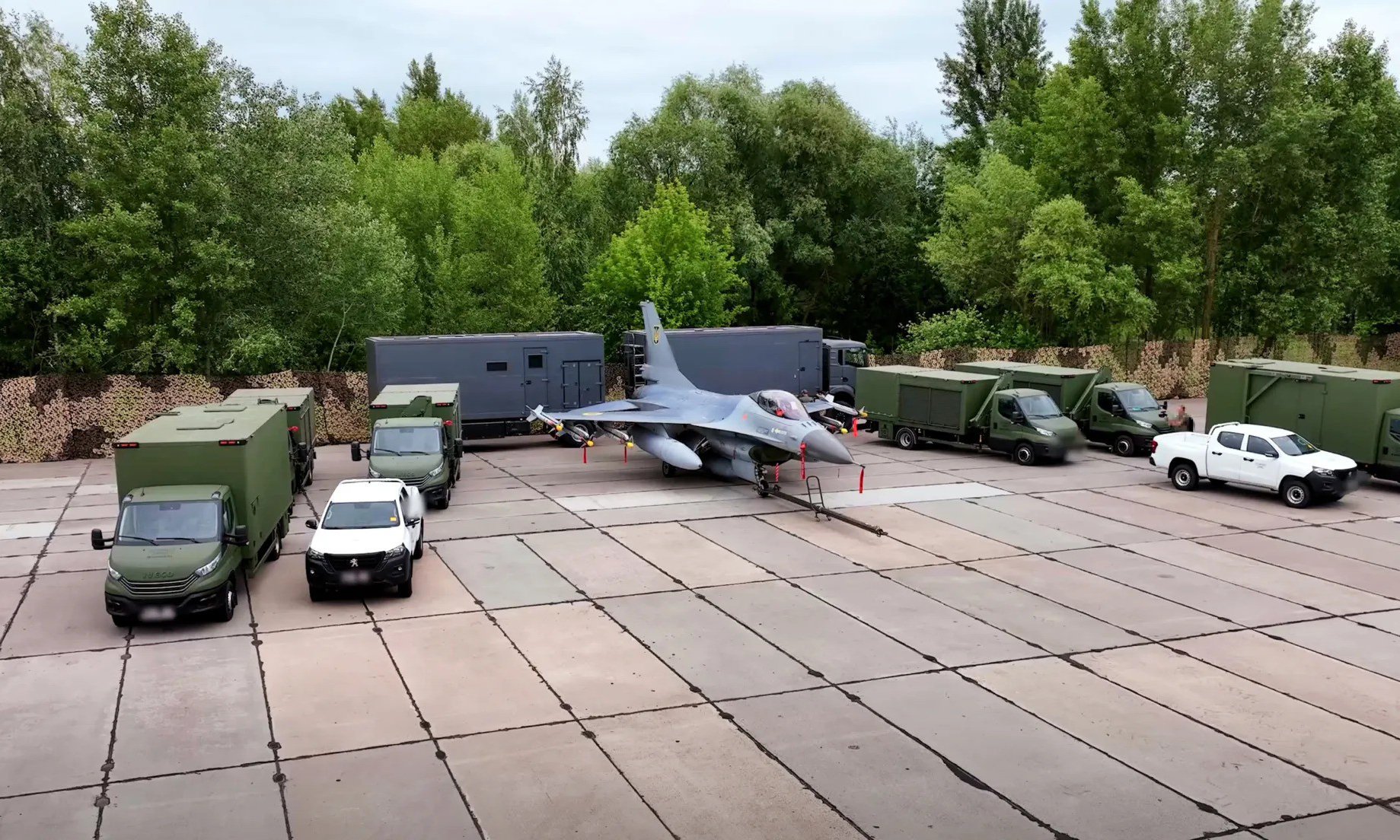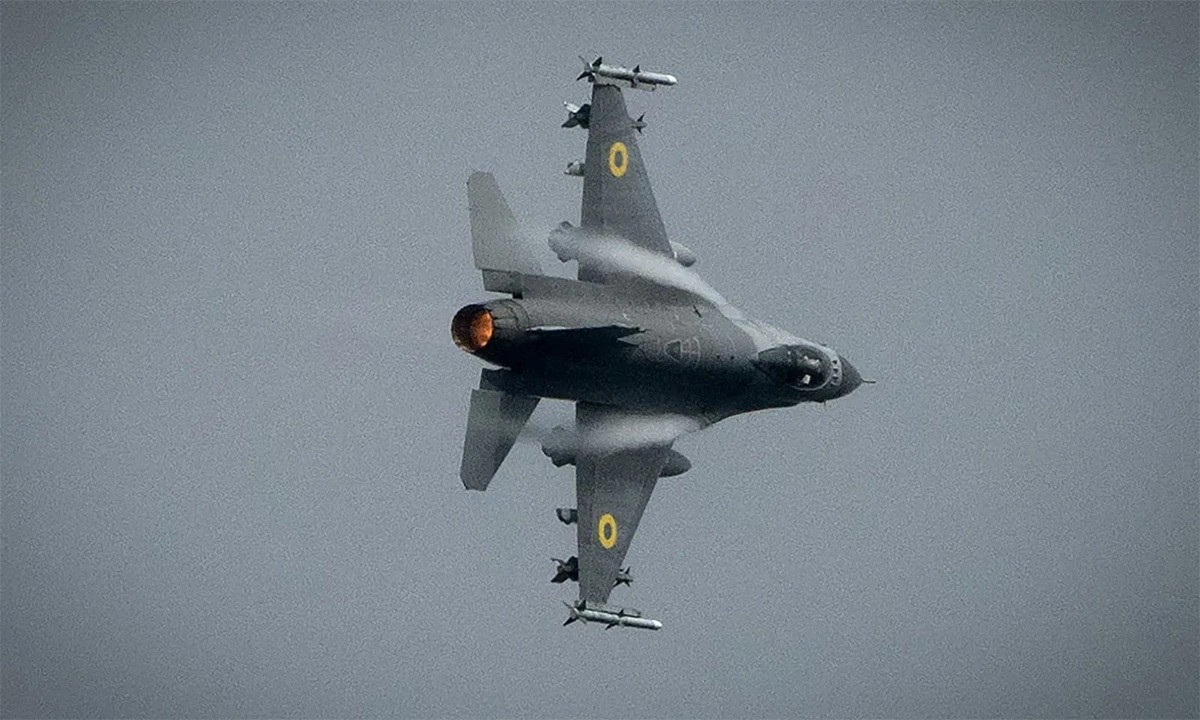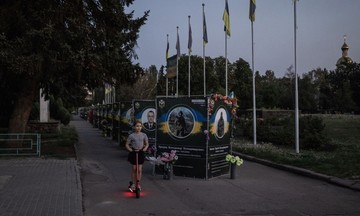Explosions rocked the Starokostyantyniv airbase in western Ukraine on July 28th, likely caused by two Kh-101 cruise missiles carrying cluster munitions.
AMK Mapping, an open-source intelligence account on X, reported that approximately 8 Kh-101 missiles, three Kinzhal hypersonic missiles, and 12 Geran-2 suicide drones targeted the base during the attack.
Starokostyantyniv airbase is a key Ukrainian air force facility and the main base for the F-16 fleet. Russia has repeatedly targeted Starokostyantyniv since the war began, with attacks increasing after Ukraine received its first F-16s in August 2024.
Ukrainian officials typically do not disclose the aftermath of Russian attacks on military targets, making it difficult to fully assess the damage and casualties. However, the July 28th attack highlights the threat to the F-16 fleet, one of Ukraine's most advanced and important assets.
"A key element in F-16 survivability on the ground is not being found in the first place," said Peter Layton, a former Australian air force officer and fellow at the Royal United Services Institute (RUSI).
F-16s are complex weapons systems requiring substantial personnel and support equipment, typically available only at established bases. This limits Ukraine's ability to disperse its F-16 fleet and makes it vulnerable to large-scale losses in a single Russian attack.
Layton considers the Iskander-M tactical ballistic missile a primary threat. "The time from detection to impact can be very short, sometimes just minutes," he said.
Some pro-Russian sources claim that large-scale missile and drone strikes have already destroyed some of Ukraine's F-16s on the ground. Kyiv has not commented on these claims, only confirming the loss of 4 F-16s during missions.
This situation may change with Ukraine's adoption of mobile maintenance and operation units for its F-16s.
 |
F-16 fighter jet and support vehicles in a photo posted on July 23rd. Photo: Come Back Alive |
F-16 fighter jet and support vehicles in a photo posted on July 23rd. Photo: Come Back Alive
Each unit comprises two groups of vehicles for repairs and maintenance, and one for operational planning. The maintenance group includes a mobile workshop truck for minor repairs and weapons testing, two trucks with small cranes for loading munitions, and a pickup truck for technicians and equipment.
The system also reduces the personnel required for munitions loading from 10-12 people to 3, saving manpower and increasing speed.
The operational planning group includes a German-made MAN 6x6 truck and a trailer. The truck houses 7 computer systems for battle planning and related activities, including pilot briefings. The trailer provides sleeping quarters for support staff during deployments.
Layton believes these mobile units will allow Ukraine to deploy F-16s at previously unused locations, including civilian airports, those with shorter runways, and more remote areas. "The F-16 fleet can be widely dispersed, minimizing the risk of losing multiple aircraft at once," he said.
Taras Chmut, head of the Come Back Alive foundation, said the project aims to adapt the F-16 fleet to the realities of the war.
"These aircraft were previously used in a closed ecosystem, unlike our method. Here, there's a full-scale conflict where aircraft must constantly sortie and are constantly hunted by the Russian military," Chmut said.
Several countries have deployed similar systems, including the US, Australia, and Sweden. The US Air Force has recently emphasized Agile Combat Employment (ACE), focusing on dispersing aircraft and equipment across multiple bases to minimize losses in case of surprise attacks.
Anastasiia Yurchyshyna, spokesperson for Come Back Alive, said Ukraine has learned from several partners, especially Denmark, but emphasized that Kyiv's systems have unique characteristics.
"When we started developing and studying Western models, we realized that none met our actual needs. In countries without active conflict, they only use standard airfields," Yurchyshyna said.
 |
Ukrainian F-16 fighter jets in a photo published in August 2024. Photo: Ministry of Defense of Ukraine |
Ukrainian F-16 fighter jets in a photo published in August 2024. Photo: Ministry of Defense of Ukraine
Denmark, the Netherlands, Norway, and Belgium have pledged approximately 80 F-16s to Ukraine. The first batch arrived from the Netherlands and Denmark in July 2024. Aside from the 4 lost F-16s, it's unclear how many Ukraine maintains in combat-ready condition.
"Ukraine is receiving more and more F-16s. The dispersal tactic will help protect them and build a larger force. With the war's duration uncertain, ensuring the long-term safety of the F-16 fleet is crucial," Layton said.












